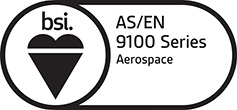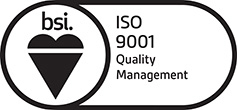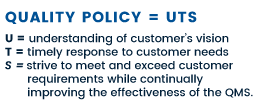What is Eddy Current Test (ET) Inspection?
Eddy Current (ET) Inspection is a non-destructive testing technique used to assess the integrity of conductive materials. It is based on the principle of electromagnetic induction, where a magnetic field is generated by passing an alternating current through a coil. This magnetic field induces eddy currents in the material being inspected, which in turn create their own magnetic fields. By measuring the changes in these induced magnetic fields, defects or irregularities in the material can be detected.
The process of eddy current NDT inspection involves the use of a probe or sensor that is placed in close proximity to the material being examined. The probe emits an alternating current, which generates a magnetic field that interacts with the material. As the probe is moved along the surface of the material, any variations in the electrical conductivity or thickness of the material will cause changes in the eddy currents and subsequently alter the magnetic field. These changes are then detected by the probe and converted into electrical signals, which are analyzed to determine the presence of defects.
Eddy current inspection is widely used in various industries, including aerospace, automotive, and manufacturing. It is particularly effective for detecting surface cracks, corrosion, and other flaws in conductive materials. The technique offers several advantages over traditional inspection methods, including its ability to inspect complex shapes and geometries, its non-contact nature, and its high inspection speed.
In addition to flaw detection, eddy current inspection can also be used for material sorting and characterization. By analyzing the electrical conductivity and magnetic permeability of a material, it is possible to determine its composition, heat treatment, or mechanical properties. This information is valuable for quality control, material selection, and failure analysis.
To ensure accurate and reliable results, eddy current inspection requires skilled operators and properly calibrated equipment. The inspection parameters, such as frequency, probe design, and signal analysis techniques, must be carefully selected based on the material and defect characteristics.
Eddy Current Test Inspection methods
Eddy Current Testing (ET) is a non-destructive testing technique widely used in various industries to detect flaws or defects in conductive materials. This method relies on electromagnetic induction to generate eddy currents within the material being inspected. By analyzing the changes in these currents, technicians can identify surface or near-surface defects, such as cracks, corrosion, or material thickness variations.
Surface Inspection:
One of the primary applications of ET is surface inspection. This method involves moving an eddy current probe over the material’s surface to detect any irregularities. The probe consists of a coil that generates an alternating magnetic field. As the probe moves, the eddy currents induced in the material interact with any surface defects, causing changes in the probe’s electrical impedance. These changes are then measured and analyzed to identify and characterize the flaws.
Near-Surface Inspection:
In addition to surface inspection, ET can also be used for near-surface inspection. This method is particularly useful for detecting defects located just below the material’s surface. By adjusting the frequency and amplitude of the alternating current applied to the probe, technicians can control the depth of penetration. This allows for precise detection of flaws situated within a specific depth range.
Tube Inspection:
ET is highly effective in inspecting tubes and pipes commonly found in industries such as oil and gas, power generation, and aerospace. Eddy current tube inspection involves inserting a probe into the tube, which emits eddy currents that interact with the tube’s inner surface. By analyzing the changes in the probe’s impedance, technicians can identify defects such as cracks, pitting, or erosion within the tube walls. This method is crucial for ensuring the integrity and safety of critical systems. Eddy current chiller testing is a common test inspection use case. This is when Eddy current test is used to inspect tubing in air coolers, condensers and heat exchanges.
Advantages of Eddy Current Testing
Eddy Current Testing (ET) offers numerous advantages in various industries.
One of the key advantages of ET is its ability to detect surface and near-surface defects with high accuracy. This technique is particularly effective in identifying cracks, corrosion, and other flaws that may not be visible to the naked eye. By analyzing the changes in the electrical conductivity and magnetic permeability of the material, ET can provide valuable insights into the integrity of the tested object.
Another advantage of eddy current non-destructive testing is its non-contact nature. Unlike other testing methods that require physical contact with the material, ET can be performed without any direct contact. This not only eliminates the risk of damage to the object being tested but also allows for testing in hard-to-reach or hazardous areas. Additionally, ET can be conducted on a wide range of materials, including metals, alloys, and non-ferrous materials, making it a versatile testing technique.
Furthermore, ET offers rapid and efficient testing capabilities. With advancements in technology, modern ET equipment can quickly scan large areas and provide real-time results. This enables faster inspection processes, reducing downtime and increasing productivity. Moreover, ET can be automated, allowing for continuous monitoring and data collection, which is particularly beneficial in industries where regular inspections are required.
In terms of cost-effectiveness, ET proves to be advantageous as well. Compared to other testing methods, such as radiography or ultrasonic testing, ET requires minimal preparation and setup time. It also does not involve the use of hazardous materials or emit harmful radiation, ensuring a safer working environment.
The NTS Unitek benefit
Our team of highly qualified NDT inspectors can determine subsurface discontinuities by carefully examining their nature, location and extent. Our team of non-destructive testing (NDT) Technical Specialist are highly qualified in Eddy Current test inspection. They hold Level II and III certifications from the American Society for Nondestructive Testing (ASNT), as well as other industry qualifications. Trust us in providing professional and reliable NDT inspection support services that will help you validate your product conformity.
Please contact us to obtain further details regarding our Eddy Current Test inspection support services. When looking for eddy current testing companies, the NTS Unitek team of experts is readily available to assist you with any inquiries you may have.




